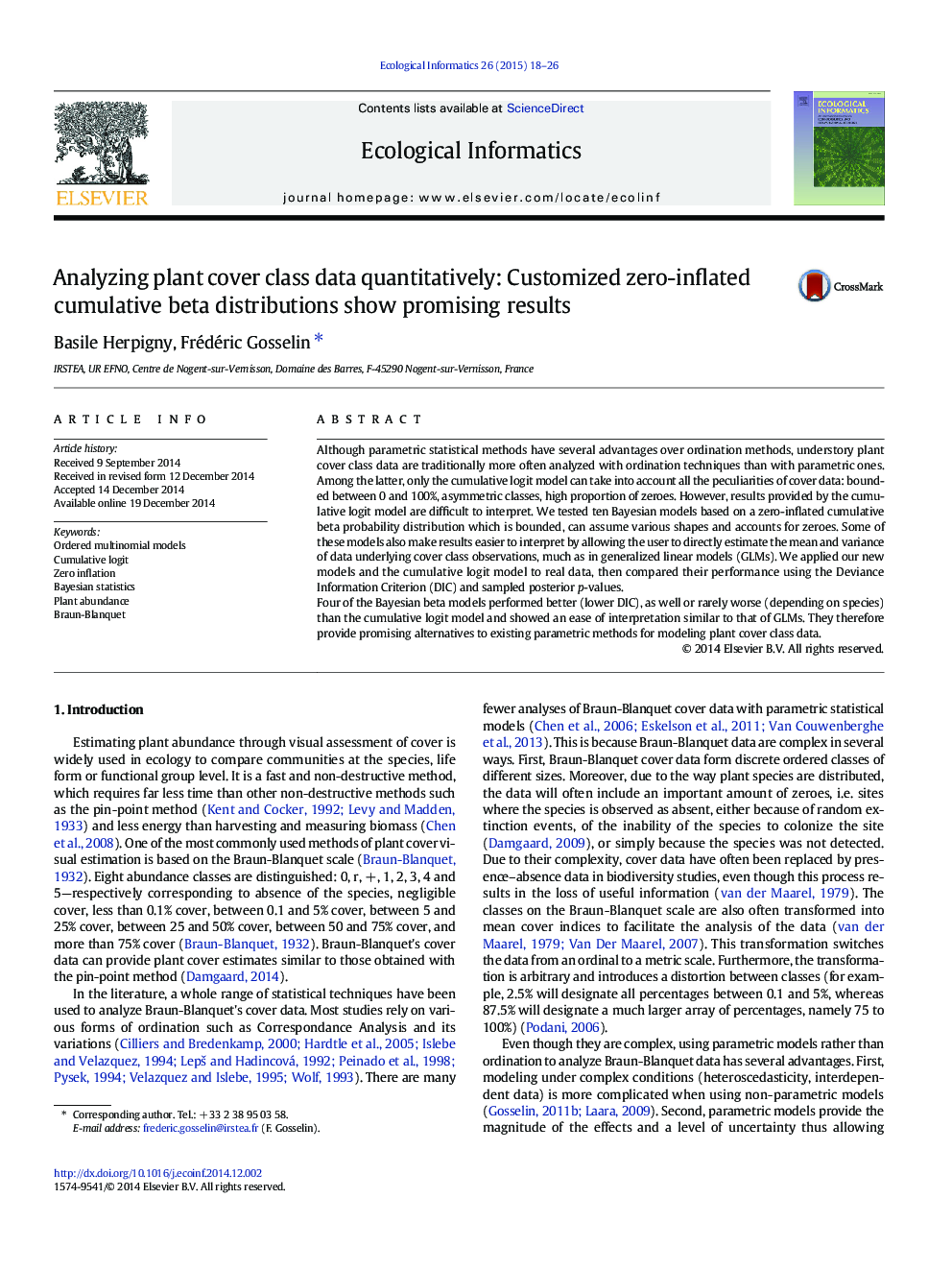| Article ID | Journal | Published Year | Pages | File Type |
|---|---|---|---|---|
| 4374823 | Ecological Informatics | 2015 | 9 Pages |
•Zero-inflated cumulative beta distribution models applied to plant cover data.•Performance comparable to that of the traditionally used cumulative logit model.•New models are easier to interpret than the cumulative logit model.
Although parametric statistical methods have several advantages over ordination methods, understory plant cover class data are traditionally more often analyzed with ordination techniques than with parametric ones. Among the latter, only the cumulative logit model can take into account all the peculiarities of cover data: bounded between 0 and 100%, asymmetric classes, high proportion of zeroes. However, results provided by the cumulative logit model are difficult to interpret. We tested ten Bayesian models based on a zero-inflated cumulative beta probability distribution which is bounded, can assume various shapes and accounts for zeroes. Some of these models also make results easier to interpret by allowing the user to directly estimate the mean and variance of data underlying cover class observations, much as in generalized linear models (GLMs). We applied our new models and the cumulative logit model to real data, then compared their performance using the Deviance Information Criterion (DIC) and sampled posterior p-values.Four of the Bayesian beta models performed better (lower DIC), as well or rarely worse (depending on species) than the cumulative logit model and showed an ease of interpretation similar to that of GLMs. They therefore provide promising alternatives to existing parametric methods for modeling plant cover class data.
